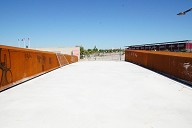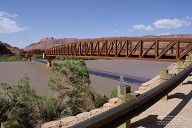Subsequent damping without alteration of the bridge structure
The Zinggen Bridge in Brixen was retrofitted with customized vibration dampers to reduce vertical vibrations. In the process, no interventions were allowed on the structure itself.
Media
Small but excellent projects also demonstrate what is crucial in bridge construction. At the Zinggen Bridge with bike and pedestrian ways in Brixen (South Tyrol), vibration absorbers were retrofitted in an uncommon assembly effort. The custom-made vibration absorbers made a second employment of fitters for readjustment obsolete – and their excellent performance prompted a follow-up project to be realized in the vicinity.
The Zinggen Bridge in Brixen features the shape of a trough structure made of steel and, with a length of 36.2 m, it crosses the Eisack north of Brixen as a single-span beam. The entire construction is welded, which results in an elegant optical impression but also causes vertical vibrations. “These vibrations do not impede the load-bearing capacity, however, the building owner ‒ the municipality of Brixen ‒ required a certain damping behavior to ensure that everyone can use the bridge,” explains project manager Dipl.-Ing. Peter Huber from MAURER.
To render this damping behavior possible, the Bergmeister engineering team that was in charge of the supporting structure brought MAURER in to ensure optimum damping. The specification clearly stated that no intrusions into the structure should be made. In addition, MAURER had to deal with the whole bunch of damping tasks, from a model calculation to design with drawings through to production and assembly.
Based on the structural data, MAURER compiled various pedestrian load scenarios (in accordance with the HIVOSS guideline), taking into consideration the desired maximum accelerations, for instance, 0.35 m/s2 for a runner. The data were used to conduct several simulations in the model. Thereafter, the type of construction and the position of the vibration absorber, as well as the required damping mass, were determined based on these simulations.
However, it turned out that the single damper calculated as described above could not be installed underneath the bridge because of longitudinal ribs at the bottom of the bridge, which serve for stabilizing the bridge construction. The spacings between the steel ribs were too small to accommodate a sufficiently large damper. Therefore, the required damper mass was divided into two small dampers with identical construction, each featuring half the mass. They fitted perfectly into the spacings between the ribs so that they are not visible from the outside.
Model-based TMD design
“Taking into consideration all specifications, we then suggested an optimum TMD solution and coordinated it with the Bergmeister engineering team,” explains Huber. TMD stands for Tuned Mass Damper, which is a spring-mass damper in classic construction: the mass rests on four coil springs.
The springs were technically adjusted in such a manner that they swing vertically off-phase “against” the eigenfrequency of the structure. This was not only theoretically calculated but also verified in practice through dynamic measurements after the bridge construction was completed: acceleration sensors were placed onto the bridge and predetermined test pedestrians and groups had to walk or run across the bridge. In this way, the behavior of the bridge could be precisely assessed, and the vibration absorbers manufactured to accurate fit: with a frequency of 2.45 Hz and a swinging mass of 480 kg.
“Naturally, such measurement on-site is more precise than any modeling,” explains Huber. “We are able to adjust our vibration damper optimally and we know beforehand that it will function properly. That saves time and money since it renders the second employment of fitters for readjustment obsolete.”
Step-by-step assembly
The vibration dampers had to be delivered within a relatively short time. The two dampers have the following dimensions: length 1.350 mm, height 400 mm, width 250 mm, and, as a special feature, a frame protecting the springs and the mass. This facilitates assembly; the spring-mass damper can be installed underneath the bridge relatively stable as a package.
The retrofit could be completed in just one day. The photo series below shows the assembly step by step.
The implementation on site was so convincing that a follow-up project was ordered in Brixen: the flood protection of the pedestrian bridge in Priel. The engineering office hbpm Ingenieure took the lead in this project, the same engineering office that conducted inspection and testing of the initial structure.
- About this
data sheet - Product-ID
8014 - Published on:
14/12/2021 - Last updated on:
16/12/2021

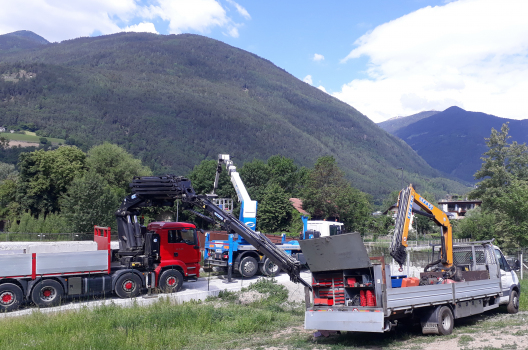
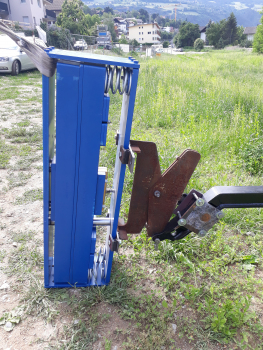
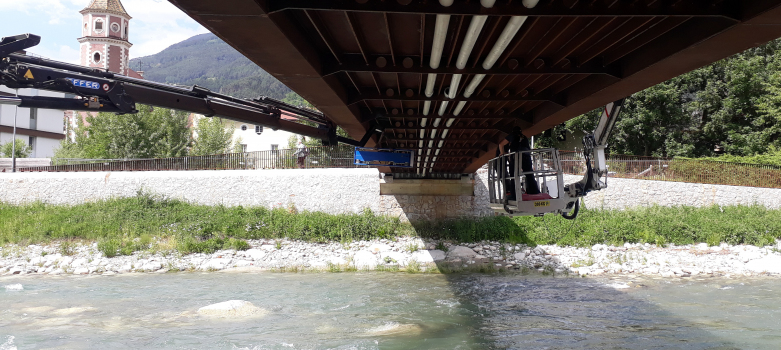
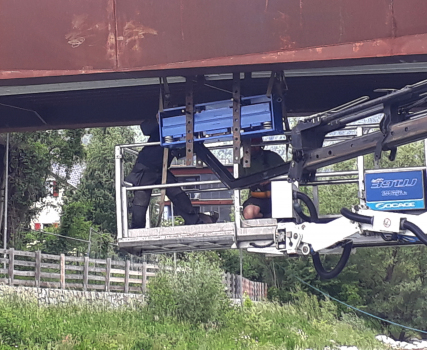
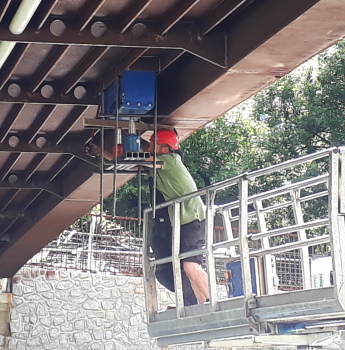
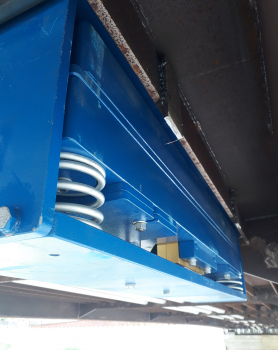
 MAURER SE
MAURER SE 
